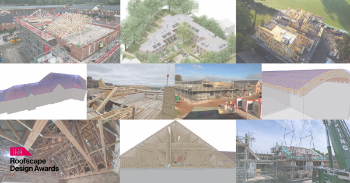Measured quantity
Quantity is a measurement of a physical entity in units that depend on the nature of that entity. Therefore, quantity indicates how much of something exists, existed or will exist.
In construction, ‘measured quantities’ typically form part of a bill of quantities (BoQ) and indicate how much of something will be required to construct a building or part of a building.
Usually prepared by a quantity surveyor (QS), the BoQ provides project-specific, measured quantities of the items of work identified by the drawings and specifications (which form part of the tender documentation). For example, in a traditional building, the BoQ will contain measured quantities for each item that goes to make up the final construction e.g bricks, doors, ironmongery, floor tiles, roof slates, etc. This means that potential tenderers know exactly how much of a given quantity will be required for the work and so they can price for it. This creates a level playing field as all tenderers are pricing for the same measured quantities which allows the client to make easy comparisons between the bids.
Measured quantities are typically expressed in number (e.g door handles), length (e.g handrails, kerbs), area (e.g floor tiles, plaster), volume (e.g concrete) or weight (e.g gravel).
When prices have been entered by a tenderer beside each measured quantity in a BoQ, this constitutes the tenderer’s offer.
Not providing measured quantities would require that the various tenderers on a project ‘take off’ the quantities themselves. With numerous tenderers with possibly different methodologies, as well as human error creeping in, the quantities taken off would vary, thus making the client’s job in comparing the tenders that much harder.
The New Rules of Measurement (NRM) are published by the Royal Institution of Chartered Surveyors' (RICS) Quantity Surveying and Construction Professional Group. They provide a standard set of measurement rules for estimating, cost planning, procurement and whole-life costing for construction projects. Adopting a standard methodology such as NRM facilitates consistency and benchmarking and helps avoid disputes.
NRM is a suite of documents, comprising three volumes; NRM1, NRM2 and NRM3.
Fore more information see: New rules of measurement.
In some circumstances, it may be difficult to determine exact quantities, for example early in the development of a project. In this case approximate quantities may be estimated. These should be accompanied by a schedule of the assumptions made in determining the approximate quantities.
For more information see: Approximate quantities.
[edit] Related articles on Designing Buildings Wiki
- Approximate quantities.
- Bill.
- Taking off construction works
- Bill of quantities breakdown structures BQBS
- Types of bill of quantities
- Standard Method of Measurement SMM7
- Preliminaries in construction
- Schedule of rates for construction
- Bill of quantities software
- Tender documentation for construction projects
- Approximate bill of quantities
- How to take off construction works
- Specification for construction
- Advantages of a bill of quantities
- New Rules of Measurement
- Typical tender process for construction projects
- Priced bill of quantities
- All-in rates
- Common mistakes in bill of quantities
- Bill of quantities v Schedule of rates
Featured articles and news
Moisture, fire safety and emerging trends in living walls
How wet is your wall?
Current policy explained and newly published consultation by the UK and Welsh Governments.
British architecture 1919–39. Book review.
Conservation of listed prefabs in Moseley.
Energy industry calls for urgent reform.
Heritage staff wellbeing at work survey.
A five minute introduction.
50th Golden anniversary ECA Edmundson apprentice award
Showcasing the very best electrotechnical and engineering services for half a century.
Welsh government consults on HRBs and reg changes
Seeking feedback on a new regulatory regime and a broad range of issues.
CIOB Client Guide (2nd edition) March 2025
Free download covering statutory dutyholder roles under the Building Safety Act and much more.
AI and automation in 3D modelling and spatial design
Can almost half of design development tasks be automated?
Minister quizzed, as responsibility transfers to MHCLG and BSR publishes new building control guidance.
UK environmental regulations reform 2025
Amid wider new approaches to ensure regulators and regulation support growth.
The maintenance challenge of tenements.
BSRIA Statutory Compliance Inspection Checklist
BG80/2025 now significantly updated to include requirements related to important changes in legislation.
Shortlist for the 2025 Roofscape Design Awards
Talent and innovation showcase announcement from the trussed rafter industry.






















